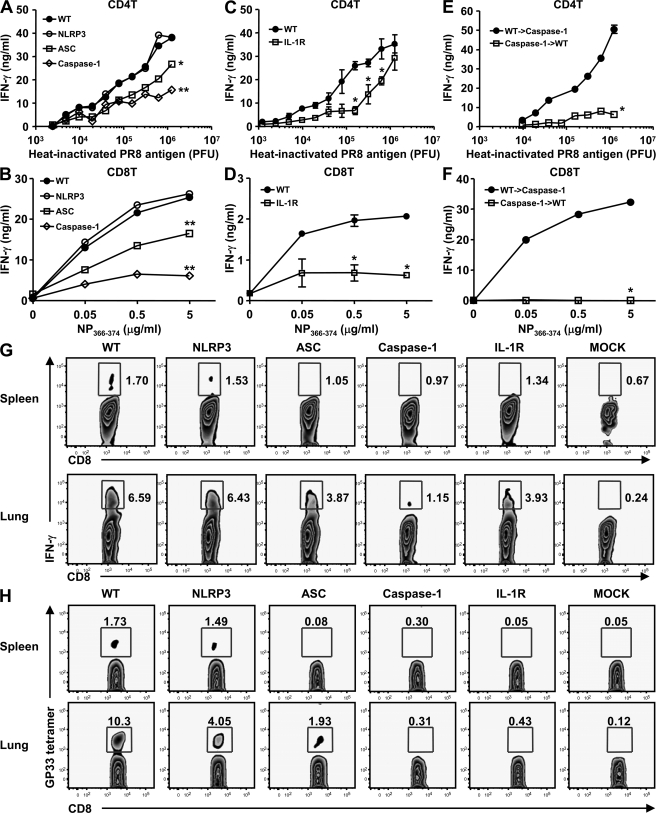Figure 2.
Influenza-specific CD4 and CD8 T cell responses depend largely on ASC and Caspase-1 but not NLRP3. WT, NLRP3-, ASC-, and caspase-1–deficient mice (A and B), IL-1R−/− mice (C and D), or WT→caspase-1−/− and caspase-1−/−→WT BM chimeric mice (E and F) were infected intranasally with a sublethal dose (10 PFU) of A/PR8 virus. 14 d p.i., CD8 and CD4 T cells were isolated from spleen and stimulated with irradiated APCs with the indicated amount of heat-inactivated virion or NP peptide for 72 h, respectively. IFN-γ production from CD4+ T cells (A, C, and E) and CD8+ T cells (B, D, and F) was measured by ELISA or by intracellular IFN-γ staining (G). (H) Indicated groups of mice were infected with 10 PFU of A/PR8/GP-33 recombinant influenza virus, and GP33-specific CD8 T cells were detected in the spleen and the lung at 14 d p.i. using the Kb-GP33-41 tetramer. These figures are representative of three similar experiments. Error bars show SD. *, P < 0.05; **, P < 0.01 versus WT mice.

